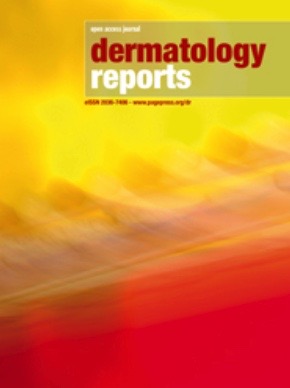Immunohistochemical expression of interleukin β in papule biopsies from patients with acne vulgaris

All claims expressed in this article are solely those of the authors and do not necessarily represent those of their affiliated organizations, or those of the publisher, the editors and the reviewers. Any product that may be evaluated in this article or claim that may be made by its manufacturer is not guaranteed or endorsed by the publisher.
Authors
Acne vulgaris is the most common inflammatory disease of the skin. IL-1β has been found in acne lesions and is a promising target for therapy, but the evidence is limited. Therefore, this study was conducted to investigate the immunohistochemical expression of IL-1β in papule biopsies of inflammatory acne and its association with disease severity. This study involved 20 patients with acne vulgaris (13 females, median age: 22 years). Samples were taken using punch biopsy. Immunohistochemical IL-1β expression was semi-quantitatively assessed as absent, mild, moderate or strong. Disease severity was evaluated according to the Global Acne Grading System (GAGS). There were 7 patients with mild disease and 11 patients with moderate disease. Median GAGS score was 20. Mild and moderate accounted for 65% and 30% for dermal IL-1β expression, 60% and 40% for epidermal expression, and 70% and 15% for perifollicular expression. Moderate-strong perifollicular expression had significant higher GAGS score than absent-mild expression (median: 22 versus 16). This study shows the elevated immunoreactivity of IL-1β in papule biopsies of inflammatory acne vulgaris. The levels of IL-1β expression also correlates with disease severity. IL-1β could be a good candidate for targeting treatment of acne vulgaris.
How to Cite

This work is licensed under a Creative Commons Attribution-NonCommercial 4.0 International License.








